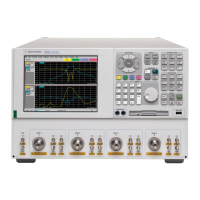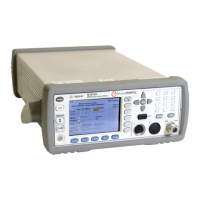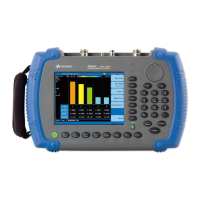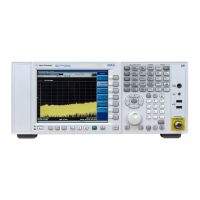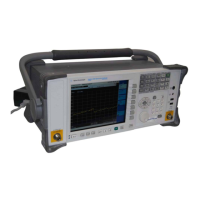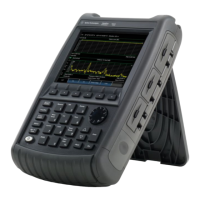4-36 Service Guide N5230-90024
Troubleshooting PNA Series Microwave Network Analyzers
Measurement System Troubleshooting N5230C
Checking the Signal Separation Group
Before checking the signal separation group, perform the following procedures:
• “Getting Ready to Test” on page 4-29
Checking the Output Power of the A and B Signals
Using a power meter, you can measure the outputs of the A and B signals from the front panel. The
measurement results will help you isolate a faulty assembly. The outputs of the R1 and R2 channels cannot
be measured because it would necessitate breaking the phase lock loop, causing all of the signals to be lost.
Equipment Used for These Tests
Equipment Setup
1. Before starting these checks, zero and calibrate the power meter. (See the power meter user’s guide for
instructions on setting the calibration factor.)
2. If the
Receiver Display (Figure 4-7) is not on the analyzer screen, perform the following: On the System
menu, point to
Service, Utilities, and then click Receiver Display.
3. Set the sweep speed for a 10 second sweep: On the Sweep menu, click Sweep Time and set the time to
10.000 seconds in the
Sweep Time box.
Checking Port 1 Power (A Signal)
The object of this check is to verify the power of the A signal across the entire frequency range. Perform this
test if there is an observed problem only with the channel A trace. The ten second sweep is slow enough to
allow you to observe the output power on the power meter as the sweep occurs.
1. Connect the power sensor to Port 1.
2. Observe the power reading on the power meter as the sweep occurs on the analyzer.
3. The measured output power on the power meter should be approximately -5 dBm (for 20 GHz PNA), -10
dBm (for 40 GHz PNA), or -15 dBm (for 50 GHz PNA), over the entire frequency range.
• If the measured power is correct, go to “Checking the Receiver Group” on page 4-40.
• If the measured power is not correct, go to “Checking the Signal through the Signal Separation Path”
on page 4-37.
Equipment Type
Models
Used With
Model or
Part Number
Alternate Model or
Part Number
Power meter All E4418B/E441B E4418A/E4419A
Power sensor, 3.5 mm 20 GHz models E8485A None
Adapter, 3.5 mm (f) to 3.5 mm (f) 20 GHz models 83059B 85052-60012
Power sensor, 2.4 mm 40 and 50 GHz models 8487A None
Adapter, 2.4 mm (f) to 2.4 mm (f) 40 and 50 GHz models 11900B 85056-60007
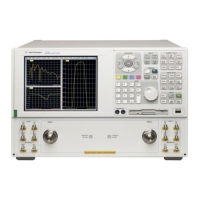
